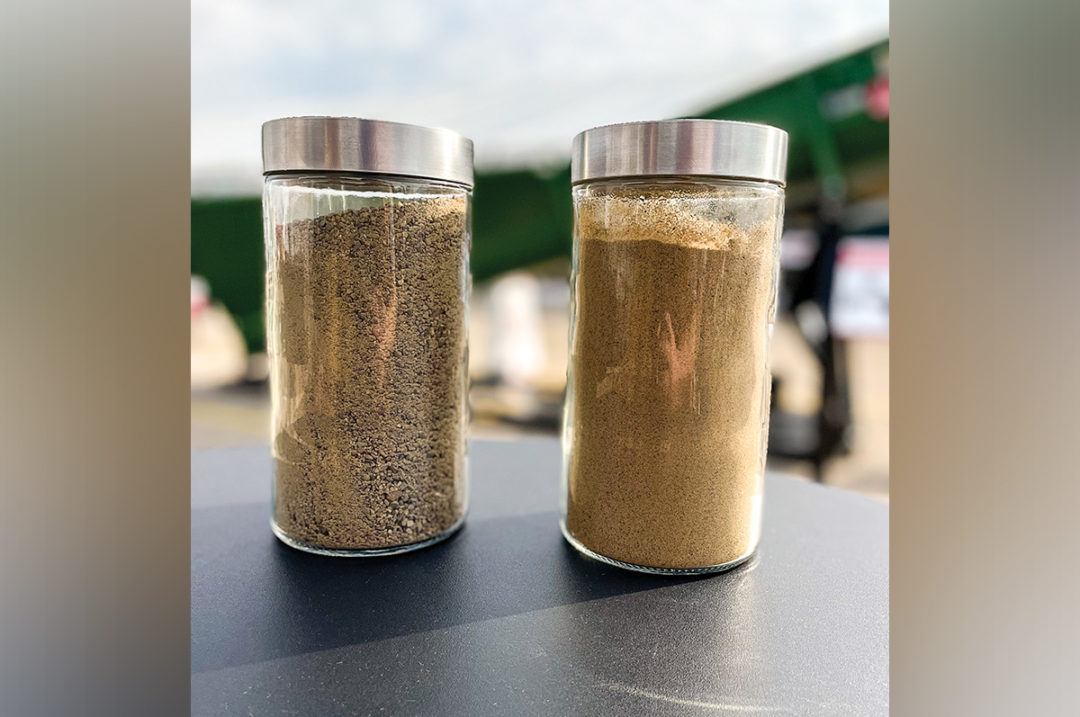Sand is the gold standard for dairy cow bedding, but all that glitters is not gold. Not all sand is created equal, and not just any sand will offer a comfortable place for cows to lie while providing the drainage necessary to keep stalls cleaner and drier for longer. Nor does all sand allow for efficient removal from manure prior to storage or anaerobic digestion. To paraphrase Goldilocks, you are seeking sand that is just right.
Concrete sand for the win
Optimal dairy cow bedding sand should not contain large particles that can harm the cow – think about how you feel when you step on sharp objects. While cow hooves are tougher than human feet, larger particles can be excessively abrasive, become wedged between hoof claws or cause soft tissue injuries. At the same time, sand must be coarse enough that it separates from manure for efficient recycling.
Plus, the ideal sand should contain minimal fine material, which can cause the sand to pack in the stalls, making them hard and uncomfortable and can increase stall maintenance and labor costs.
Concrete sand is the preferred type of sand bedding – it is widely available and contains a good mix of particle sizes ideal for cow comfort, cleanliness and sand separation. Concrete sand is characterized by the American Standard for Testing Materials (ASTM) specification ASTM C-33. It is also known as construction sand, torpedo sand or 2NS.
Drainage matters
Concrete sand contains minimal fine material, which helps it stay loose in the stalls. It readily drains away urine and dripped milk, which can lead to the growth of mastitis-causing bacteria.
Stall drainage is important because, over time, bedding quality decreases as it becomes contaminated with urine, milk and feces. These bedding contaminants are associated with increased organic matter and decreased dry matter, all of which can compromise cow health and comfort.
Research suggests cows should be bedded with sand that contains less than 3% organic matter and more than 95% dry matter.
Clean, dry beds are more comfortable for cows, and more comfortable stalls lead to cows experiencing longer bouts of lying time. Generally speaking, the more time cows spend lying down, the more milk they make, adding to the farm’s profitability.
On average, cows spend about 10 to 12 hours lying in freestall barns. Research shows stall surface can influence lying time, with sand being the preferred option for cows.
For example, dairy cows from herds with sand-bedded stalls showed significantly higher lying time compared to herds with mattress stalls (12.7 versus 11.5 hours per day). Furthermore, herds with deep-bedded stalls have a significantly lower prevalence of lameness compared to herds with mattress stalls.

Sand separation factors
Besides cow comfort and cleaner, drier stalls, concrete sand is also ideal for sand separation and recovery because it contains minimal fine material that can be lost during the recycling process, increasing sand recovery. More efficient sand recycling translates into lower bedding costs while reaping the benefits of sand bedding.
If bedding is being recycled, starting with clean, dry bedding is key. Sand separation systems can be used to remove the sand from the manure stream and wash away much of the organic matter in the recycled, separated sand.
Sand separation can be used with all types of manure handling and removal systems, whether it is large volumes of water (flush and flush-flume systems) or substantially less water (scrape and vacuum systems). The key is having a reliable method to collect and deliver the manure at a central point. From there, a knowledgeable original equipment manufacturer can recommend the ideal system.
With the right sand and a properly designed and managed sand separation system, you can achieve more than 90% sand recovery rates. These sand separation solutions allow you to reuse sand bedding over and over again, saving money by recycling sand and eliminating the high cost and hassle of handling sand-laden manure.
Keep the basics of cow comfort in mind when making sand selections. Ultimately, bedding should enhance cow comfort by providing a clean, comfortable resting place. Since it is inorganic and granular, concrete sand meets these needs perfectly.
References omitted but are available upon request by sending an email to the editor.
How free is free?
Sand purchases can easily become big-ticket items. For instance, a 500-cow dairy using 50 pounds of sand per cow per day at $15 a ton spends $68,438 a year on sand bedding material.
As a result, dairies may look for other options to source sand, especially if they have a sandpit on-farm or a few miles down the road. This sand bedding is perceived to be free, as it does not come with an up-front purchase price.
But “free” sand may contain undesirable levels of too-fine or too-coarse particles, decreasing cow comfort and sand recovery efforts. It may also contain high concentrations of organic matter and bacteria.
Also, regardless of sand origin, there are always costs involved.
The dairy must handle and haul the sand to its facilities, even from an owned pit, meaning the farm incurs fuel, labor and depreciation costs. Additionally, the sand must be taken out of storage facilities, incurring even more labor, fuel, equipment and depreciation costs.
The bottom line? Free sand is not always free.





